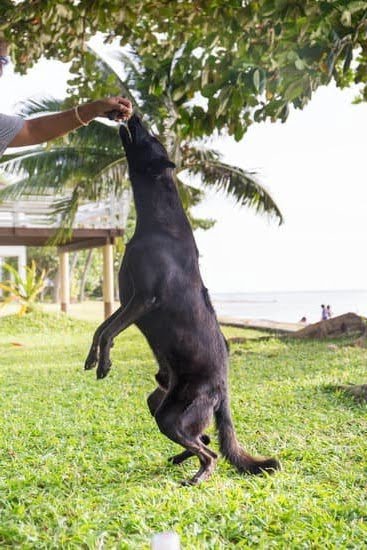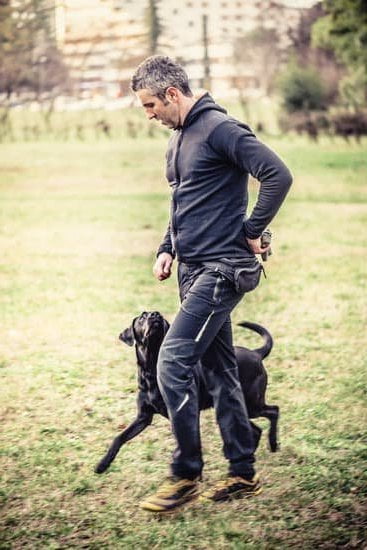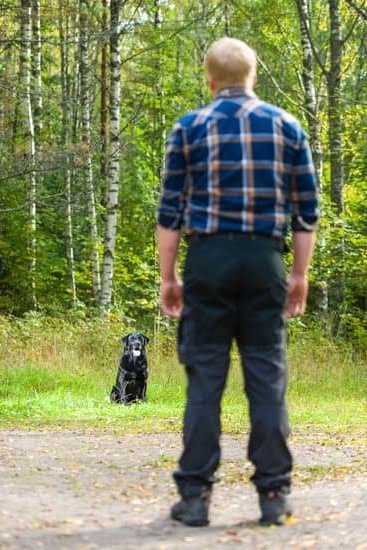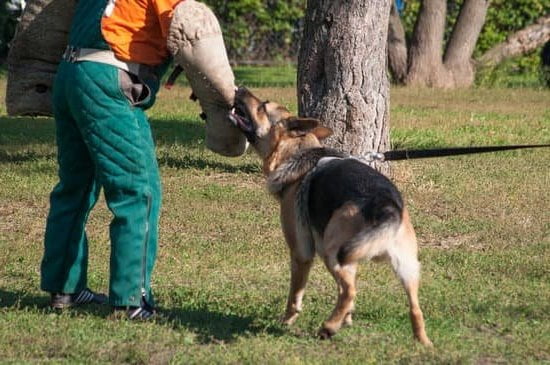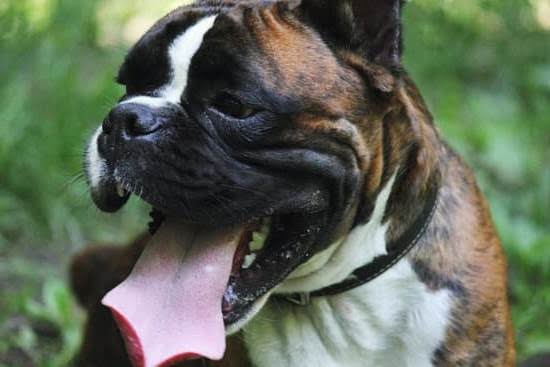Breaking Down Necessary Training Supplies and Equipment
Australian Cattle Dog training requires specific supplies and equipment to ensure the best possible outcomes for your pup. Start with a sturdy leash, preferably at least 4-6 feet long. A proper heavy-duty collar is also important, as is a pet check chain when the pup is older and strength trained. A clicker can help teach new behaviors quickly and efficiently, while treats are always helpful in reinforcing new skills. Finally, having an agility course or items such as tunnels, jumps and weave poles can offer varying types of activities that your pup can enjoy while learning new skills. Additionally, you may want to consider enrolling your Australian Cattle Dog in local puppy classes or agility courses to give them an opportunity to socialize with other dogs and gain more experience. This will help them become more socialized, be less aggressive around new people and pets, and understand commands more quickly.
Strategies for Establishing Consistent Training Sessions
The Australian Cattle Dog is an intelligent, loyal, and easy to train breed. To ensure successful training, it is important to establish consistent daily sessions with your pup. Here are some tips for establishing regular training sessions:
1. Define Responsibilities – Decide who will be responsible for the training and make sure that person sticks to their commitment. This not only helps avoid confusion during training but also increases the chances of success in each session.
2. Modify Behavior – If a particular response to a command does not work as expected, try different methods of reinforcement until the desired behavior emerges. For example, if verbal praise is not working well enough to reward positive behaviors, consider offering a treat instead or some other form of reward system.
3. Practice, Practice, Practice – Consistent practice and repetition are essential when training any dog. You should practice commands or behaviors multiple times throughout the week in order to build habits and increase retention levels in your pup’s mind until they become second-nature responses without further instruction required by you as an owner.
4 Set Clear Limits & Boundaries – It is important that you set clear limits and boundaries during training sessions so your pup knows exactly what behavior is agreeable versus unacceptable results in their new environment. Remember that rewarding good behavior on a more frequent basis than punishing bad behavior can go a long way towards helping your pup understand what is expected of them quickly and effectively!
Different Types of Training Methods for Australian Cattle Dogs
Positive Reinforcement: Positive reinforcement consists of using rewards and positive reinforcement to encourage desired behaviors in Australian Cattle Dogs. This approach involves praising and rewarding the animal when it performs a desired task, such as sitting politely for petting or coming when called. This can be done through treats, verbal praise, or even physical affection such as petting or scratching behind the ears.
Clicker Training: Clicker training works by associating a distinctive noise with a particular behavior. The sound serves as a marker that lets the dog know they have achieved something they were asked to do. Rewards are then given after the noise is heard to reinforce the behavior.
Operant Conditioning: Operant conditioning uses forms of reward and punishment to shape an animal’s behavior. Whenever an undesired behavior is performed, a mild form of punishment is employed (such as removal of attention or access to food). Similarly, desirable behaviors are rewarded with treats, toys, praise, or other forms of positive reinforcement.
Training on Equipment: Many different types of equipment are used during Australian Cattle Dog training, from basic obedience hurdles to brightly colored agility tunnels. For dogs that may be uncooperative during open field training sessions and need more structure, having these different toys available encourages your canine companion to focus on specific tasks and learn new skills quickly.
Solutions for Dealing with Unwanted Behavior
When training your Australian Cattle Dog (ACD), it is important to give your dog structure and boundaries. If your ACD is exhibiting unwanted behavior, such as barking, chewing, or being aggressive, there are several solutions you can implement.
One key approach is to communicate with your ACD using positive reinforcements. This means rewarding them for demonstrating the desired behavior rather than punishing them for misbehaving. Examples of this include offering treats when they obey commands or giving lots of praise after successful training sessions.
You may also want to establish a regular routine that provides clear expectations for the ACD. Give them specific instructions each day, like when and where to go potty or which yard toys to play with at certain times of the day. Stick with these expectations and encourage good behavior with rewards so that the message sinks in.
It’s also a good idea to introduce yourself as an authoritative figure so that the ACD knows who is in charge. Do periodic spot-checks around their living space and be consistent about disciplines when rules are broken. Doing this will make sure that the behaviors you don’t want from the ACD become less frequent over time, leading them towards obedience and desired actions instead.
Ideas for Incorporating Positive Reinforcement
One of the best ways to train an Australian Cattle Dog is with Positive Reinforcement. Positive reinforcement motivates a dog to learn and encourages desirable behavior, resulting in better training outcomes. To use positive reinforcement with an Australian Cattle Dog, you need to first identify the behaviors you want to reinforce. This may include sitting, lying down, coming when called, walking on a loose leash, or staying in one spot. Once you have identified the desired behavior, decide on what reward you will offer as positive reinforcement. This can be a tasty treat or a favorite toy. Whenever your dog demonstrates the desired behavior, provide them with their reward as soon as possible. Doing this consistently will help ensure they understand that they are being rewarded for good behavior and will be more motivated to demonstrate the same behavior again in future situations. Another effective way to incorporate positive reinforcement into your Australian Cattle Dog’s training is through praise and affection. Verbal praise and petting are great rewards for correct behavior, so make sure you show your Aussie appreciation when they behave properly!
Advice for Working with Difficult Tempers
Working with difficult temperaments in Australian Cattle Dogs can be a challenge. You must remember to be consistent and firm with your commands; these dogs aren’t known for taking orders very easily! Here are some tips to help you successfully train your Australian Cattle Dog:
1. Be consistent in your training. Make sure that your commands and expectations remain the same each time, so that your dog knows what is expected of them at all times.
2. Incorporate positive reinforcement into your training, such as verbal praise, treats, or toys when they follow your instructions correctly. This helps them understand that their behavior is appreciated and reinforces good habits, making it easier for you in the long run.
3. Use an assertive voice when giving commands or corrections, as Australian Cattle Dogs will not respond to weak authority figures. Establish yourself as the alpha from the start to give yourself an edge in training sessions.
4. Exercise your dog regularly – this will help channel their energy more constructively and also provide mental stimulation, both important elements of successful training sessions with any breed of dog! Play fetch or frisbee outside in a secure space where they can expend any pent up energy without running off after small animals or other distractions.
5. Spend time socializing with other dogs regularly – this can help decrease aggression towards other pups and make them more obedient on walks and neutral territory away from home grounds where fear may be driving much less coherent behavior than usual!
Fun and Engaging Ways to Keep Training Interesting
1. Use Positive Reinforcement: Positive reinforcement is one of the best and most consistent ways to reward good behavior during training. This can include a treat, a toy, verbal praise, or anything else rewarding to the dog. By ensuring that the reward is something that they truly enjoy, it will help to keep them motivated and engaged in the training process.
2. Boredom Busters: To keep Australian Cattle Dogs entertained while training, try taking regular breaks throughout each session for some fun activities like fetch, tug-of-war, hide and seek games with toys or treats, or playing music. You’ll be surprised at how much more engaged your pup is when there are moments of play between exercises!
3. Alternate Training Activities: To keep your pup from getting bored too quickly during a long training session, switch up activities often or teach different behaviors one after another within a single day. If you notice any signs of fatigue in your pup during training sessions such as yawning, panting excessively or being less responsive to commands/treats – then take a break before returning to heavier work later in the day.
4. Challenge Yourself and Your Dog: Throughout their Australian Cattle Dog’s routine training sessions, be sure to challenge both yourself and your pup with new and increasingly difficult assignments – this will help ensure that you both stay engaged in the learning process. Additionally try introducing redirective commands (e.g., “leave it”) when bad behavior starts so as to stop it before it becomes habituated; this way your pup knows what is expected of them and can learn better habits more quickly when rewards are offered soon after they comply with a command correctly!
Benefits of Positive Reinforcement Training for Australian Cattle Dogs
Positive reinforcement training offers many benefits to Australian Cattle Dogs and their owners. One of the primary benefits is that it encourages good behavior in an enjoyable and effective way. By rewarding desired behaviors with praise, treats, and affection, your canine companion will quickly learn that performing certain actions leads to positive consequences. Additionally, positive reinforcement can help strengthen the bond between you and your dog. This type of positive interaction can eliminate unwanted behaviors and create a more harmonious relationship.
Using positive reinforcement training also makes learning easier for Australian Cattle Dogs by breaking down commands into smaller, more achievable steps. This technique allows them to understand what you want them to do more quickly as they are constantly being encouraged with rewards while they learn new behaviors or skills. Furthermore, using positive reinforcement techniques can reduce stress in your dog during training because they are being motivated rather than reprimanded for mistakes—this makes the learning process faster and easier. Lastly, positive reinforcement-based methods often result in better overall results for both the owner and their pup due to its friendly nature which builds trust and respect between both parties.
Guidance for Choosing an Australian Cattle Dog Training Professional
When searching for an Australian Cattle Dog training professional, it is important to find someone who not only specializes in this breed, but also has a lot of experience and knowledge about it. It is best to start by asking potential candidates about their credentials. Some trainers may hold certifications from organizations such as the Association of Animal Behavior Professionals or the International Association of Canine Professionals. Asking for references from previous clients and conducting a background check can help narrow down your list of qualified trainers. When interviewing trainers, ask them to explain their methods in detail and make sure you understand the methods that are being used to train the dog.
Your Australian Cattle Dog will respond best to positive reinforcement-based approaches to training such as clicker training and reward-based learning. Knowledgeable trainers should be well versed on these methods and incorporate them into each training session to maximize results with minimal frustration or stress on your pup. Furthermore, they should also be able to provide guidance on how to continue reinforcing learned behaviors after sessions end so that you can ensure sustained success in working towards goals. Additionally, many Australian Cattle Dog trainers may also offer additional services such as problem-solving, behavior modification or puppy orientation classes designed specifically for this breed which can be invaluable in helping socialize your pup and create a better-trained dog overall. Before settling on one trainer, make sure you take the time for research and speak with multiple professionals if needed so that all expectations are understood before beginning an actual training program with your pup!

Welcome to the blog! I am a professional dog trainer and have been working with dogs for many years. In this blog, I will be discussing various topics related to dog training, including tips, tricks, and advice. I hope you find this information helpful and informative. Thanks for reading!

